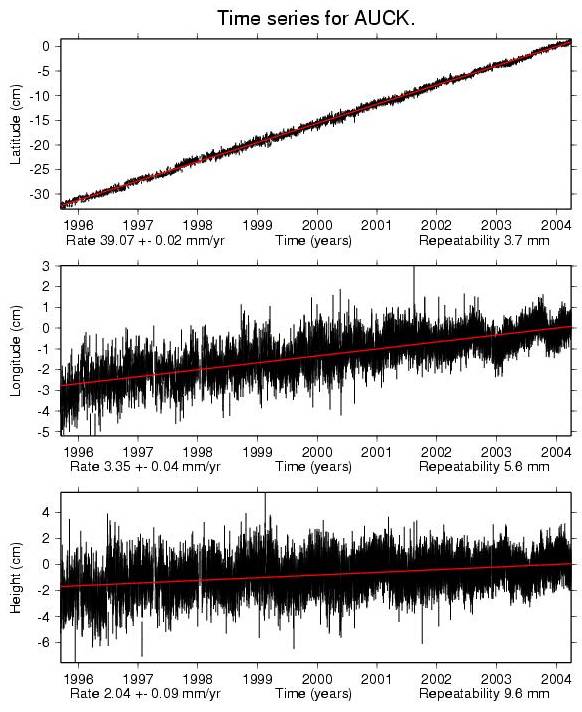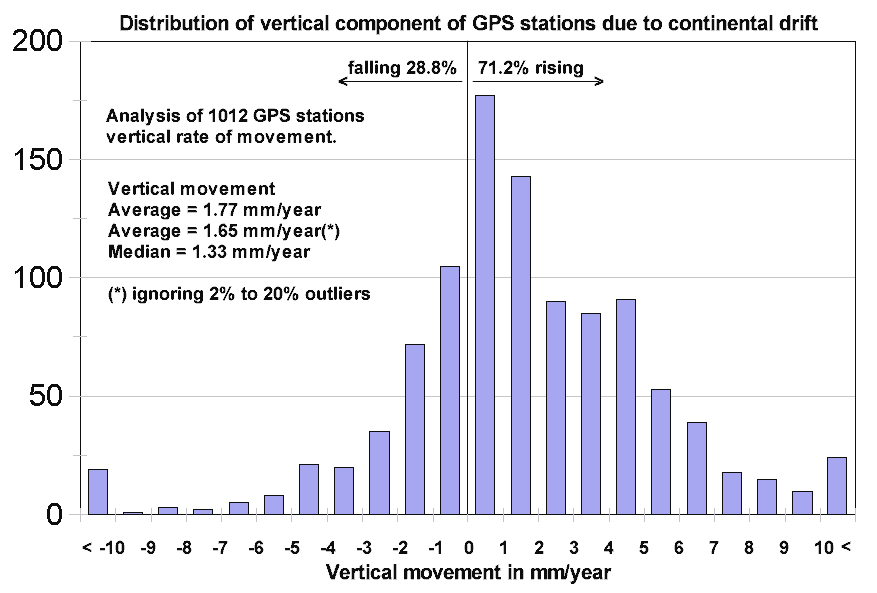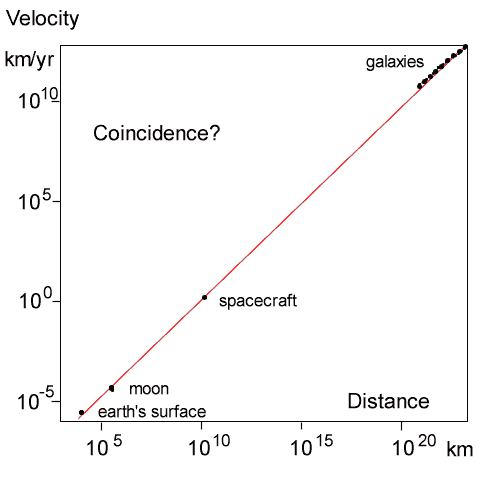Certainly, as far as galaxies go, there is a close relationship between distance and red shift. If red shift is taken to be a measure of velocity, then the expansion is fairly uniform. For a long time ... claimed that the Hubble constant was measurable as smaller on larger scales which would imply that the rate of expansion is less on more distant objects, seen as things were a long time ago. In recent times cosmologists have claimed to find an acceleration parameter that indicates the more distant objects have a slightly lower velocity than would be expected from a uniform expansion.
The Hubble constant is generally quoted by cosmologists in km/s/Mpc which hides the fact that it is really measured in units of inverse time. The most recent values tend to be around 71 km/s/Mpc which corresponds to a rate of 1/13.8 billion years.
Measurements of the distance of spacecraft leaving the solar system have shown a slight but steady decelleration in the direction of the Sun for four different craft, each of around the same amount. The amount is expressed as an acceleration of around 8×10-8 cm/s2 towards the Sun, irrespective of distance or velocity. Another way of interpreting this constant is to divide it into the speed of light to get a figure of 12 billion years which is of the same order as the inverse Hubble constant. In other words, an expansion of space at a rate of 1 part in 12 billion per year would remove the need for anomolous acceleration of spacecraft.
The moon is moving away from the earth at a rate of 3.8 cm/year or almost exactly 1 part in 1010 per year, or 1/10 billion years. Of course, the increase in the distance of the moon is believed to be fully explained as a result of tidal action. However once again we find that the value is in line with the trend of "Hubble" constants as we move towards the earth.
 The position of various stations around the earth can be measured to high accuracy using the global
positioning system (GPS) and this sytem can accurately track continental drift. Some years ago someone
who believed in an expanding earth theory was complaining that these stations were solved only for
movements in longitude and latitude with the height being assumed constant. This prevented the
expanding earth people from testing their hypothesis. The reason for believing in an expanding earth
is that the continents fit together far more accurately if the earth was smaller when the continents
were all together.
The position of various stations around the earth can be measured to high accuracy using the global
positioning system (GPS) and this sytem can accurately track continental drift. Some years ago someone
who believed in an expanding earth theory was complaining that these stations were solved only for
movements in longitude and latitude with the height being assumed constant. This prevented the
expanding earth people from testing their hypothesis. The reason for believing in an expanding earth
is that the continents fit together far more accurately if the earth was smaller when the continents
were all together.
Well, the GPS measurements are now done including the vertical position of stations, and the measurements are certainly accurate enough to show whether the earth is expanding or not. From the NASA GPS time series site I obtained data on 1012 stations that had annual height variation measurements available.
Shown here is the graph for Auckland, where I live, which is moving 39.07 mm/year Northwards, 3.35 mm /year Eastwards and 2.04 mm/year upwards, a fairly typical movement. Auckland shows an annual (seasonal) bounce up and down which is not such a common thing, perhaps a result of New Zealand being surrounded by so much water combined with seasonal temperature changes.
Some stations are moving vertically far more than others and this is no doubt due to local plate tectonics. If the distribution was about a true mean of zero, then a sample of 1012 stations should have a mean of 0 with standard deviation of 1/sqrt(1011) standard deviations of the sample. It is actual 17 times this much away, an extremely significant result.

The rate of expansion determined depends on which measure is used. The average movement is 1.77 mm/year vertically, but a small number of very fast moving stations could make this result inaccurate. Discarding the extreme 1% from each extreme changes this figure to 1.64 mm/year and discarding the extreme 10% from each extreme gives 1.63 mm/year. Discarding amounts between 1% and 10% give results between 1.65 mm/year and 1.69 mm/year with an average of 1.65 mm/year. The median vertical movement is 1.33 mm/year, so the distribution is fairly skewed. A vertical movement of about 1.6 mm/year seems a reasonably representative figure. There does not appear to be any good reason to assume that this is anything other than the expansion of the earth.
Allowing for the radius of the earth, this means that the earth is expanding at a rate of 1 part in 4×109 per year. As with the solar system expansion rate, the inverse "Hubble" constant continues to get smaller as we move to smaller scales.
Based on Mandelbrot's assertion, we could well consider this to be a result of having increasingly high average densities of matter as we move nearer to the earth. Of course this does not accord with the prefect cosmological principle, but it does accord with the facts.
There are one or two difficulties with the notion that "everything is expanding" so I have altered the heading to "almost everything is expanding". One difficulty is that the same GPS measurements show that the continents behave as more or less rigid bodies and are moving as such rather than expanding uniformly. Perhaps something else is going on here, and a reason is advanced that could also be raised for explaining the fact that continents fit together better on a smaller earth. It is that continents are not just flat areas of earth, but rather have folds in them. These folds must come about by reducing the dimensions that the continents would otherwise have - in other words making folds must make the continents smaller. So perhaps the growth that continents would otherwise experience instead goes into folds. Why should it do this to just this extent? Am I now making up coincidences when I claimed to be removing them? The answer might be that the sea floors are much more solid than the continental floors and therefore when they all push against each other it is the continental floors that must buckle.
There is certainly room for more thinking and discussion on these matters.
Elastic Rulers
 When almost everything is expanding, one must be forced to the conclusion that the ruler is made of elastic. Just as a geocentric earth makes no sense when the planets all go around the Sun and the stars
all do the same wobble in the sky, so a universe in which everything is expanding except the speed of
light is constant and the frequencies of our clocks are steady, the plot seems to have been lost.
When almost everything is expanding, one must be forced to the conclusion that the ruler is made of elastic. Just as a geocentric earth makes no sense when the planets all go around the Sun and the stars
all do the same wobble in the sky, so a universe in which everything is expanding except the speed of
light is constant and the frequencies of our clocks are steady, the plot seems to have been lost.
We might conclude, along with Halton Arp, that the frequencies of all atomic vibrations are gradually speeding up over time and that this is the cause of the cosmological red shift. Likewise it affects all of our accurate atomic clocks which run a little faster every year. If all atomic processes are speeding up then that means that the mass of atomic particles, especially nucleons (protons and neutrons) must be increasing over time, on average at the Hubble rate.
There are indications that such increase may occur in various sized steps, as red shifts have been shown clearly to have a number of periodicities by William Tifft, Halton Arp, and Guthrie and Napier.
Science is always interested in reducing the number of rules and relationships between things because that gets nearer to fundamental principles. When four supposedly different phenomena all seem part of a bigger pattern, that is a reason to take it seriously as a possibility. When some of those four observatons are anomolous results then it strongly suggests that the present rules are unsatisfacory. Even more, when the proposed solution, in this case mass increase of particles with time, leads to further clear results and fits with existing theory in a deeper way, then it is a desirable result.
The further result is that such an increase in mass with time is exactly what is required to explain gravitational attraction. Gravity really does suck! The in and out parts of the standing wave of matter (consistent with de Broglie's explanations) are not equal. Some energy has been absorbed and the out wave is a tiny bit weaker - just one part in about 1040 - enough to explain the growth in mass to fit with the red shift. However this also leads to a correct estimate of the strength of gravity compared to the other stronger forces.
The way in which such results fits with existing theory in a deeper way, is that ever since General Relativity (GR) it has been known that Maxwell's equations are nonlinear due to energy distorting the space-time metric. Given nonlinear laws of nature, and a desire to combine all fields of physics into one final theory, it is clear that such a theory must be nonlinear. It is not possible in a nonlinear physics to have unchanging stable particles throughout time. All nonlinear waves must change shape over time, and that is exactly what we have been observing, so we should be happy. Physics works. The only problem has been that keeping many branches of physics does not clarify the need for particles to gradually change over time and join with the observations that require it.
For all these reasons it is clear that physics would be a lot simpler if we didn't have to use elastic rulers. However there may be no such thing as absolute rulers, so we must forever keep improving the ones that we use and remain alert. At this time it makes a lot of sense to notice that atomic masses are increasing and so wavelegths reducing. This means that universal expansion is not needed as a concept, however we must still face the fact that different sizes are varying relative to each other at different rates. The inner planets orbits should be growing at around 0.01 km/year which is now possibly within detectable limits. If radar can be bounced off satellites of the outer planets then the change can be around 0.1 km/year.
On 14-May-2005 I received an email from V Guruprasad who has also looked at the relationship between the Hubble redshift, space probe accelerations, solar system changes and earth expansion. He wrote to thank me for providing the Earth expansion analysis on my web site. He has papers titled Relativity of spatial scale and of the Hubble flow: The logical foundations of relativity and cosmology (pdf) and The correct analysis and explanation of the Pioneer-Galileo anomalies (pdf) while his web site is called Inspired Research. He has been at this longer than me and obviously with these articles in peer review journals they have been carefully reviewed.